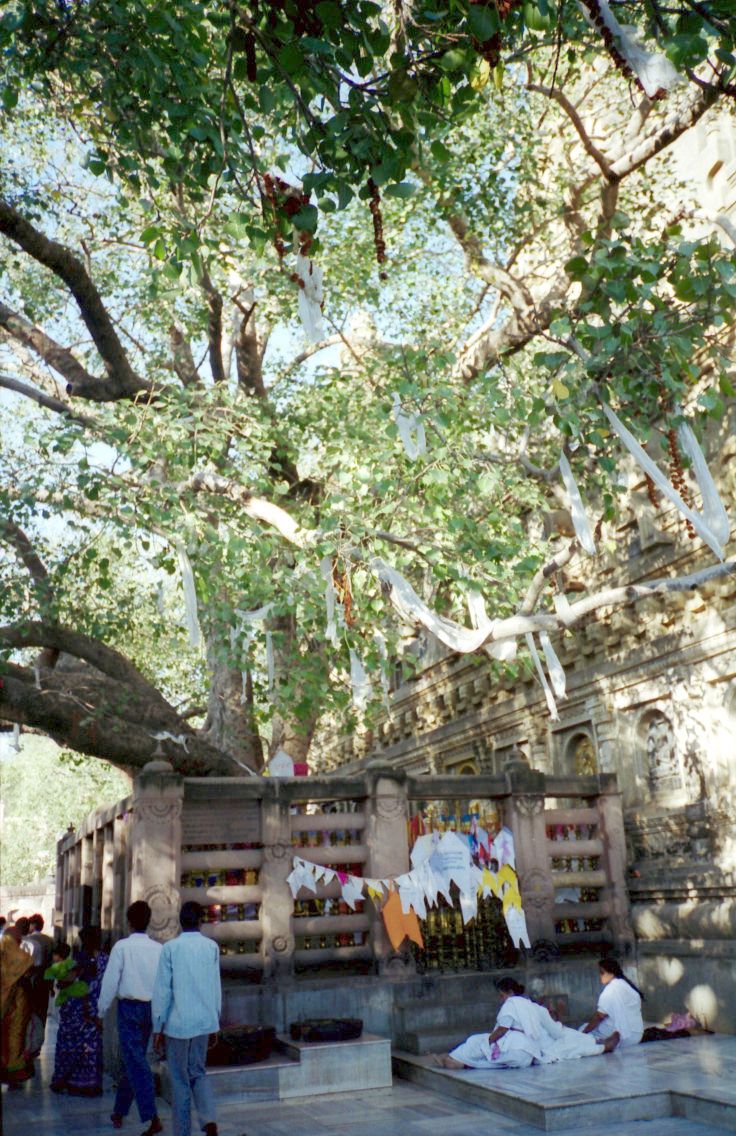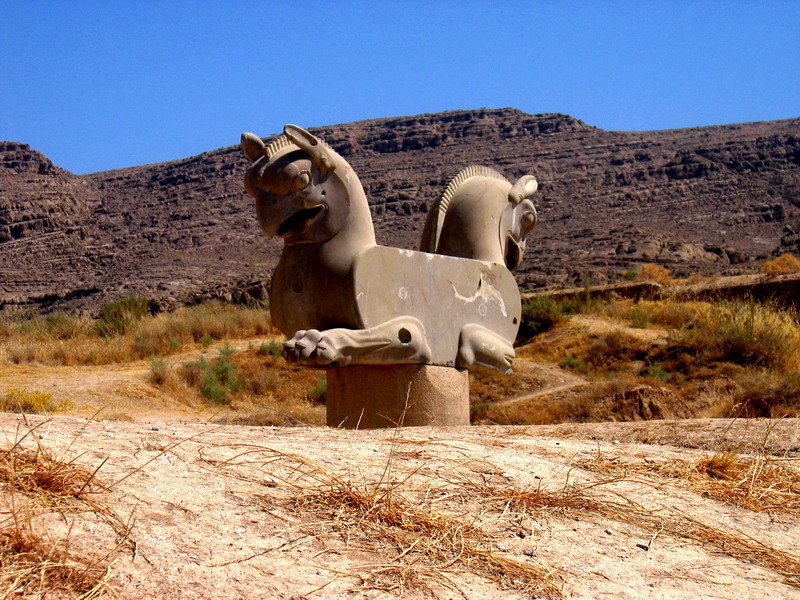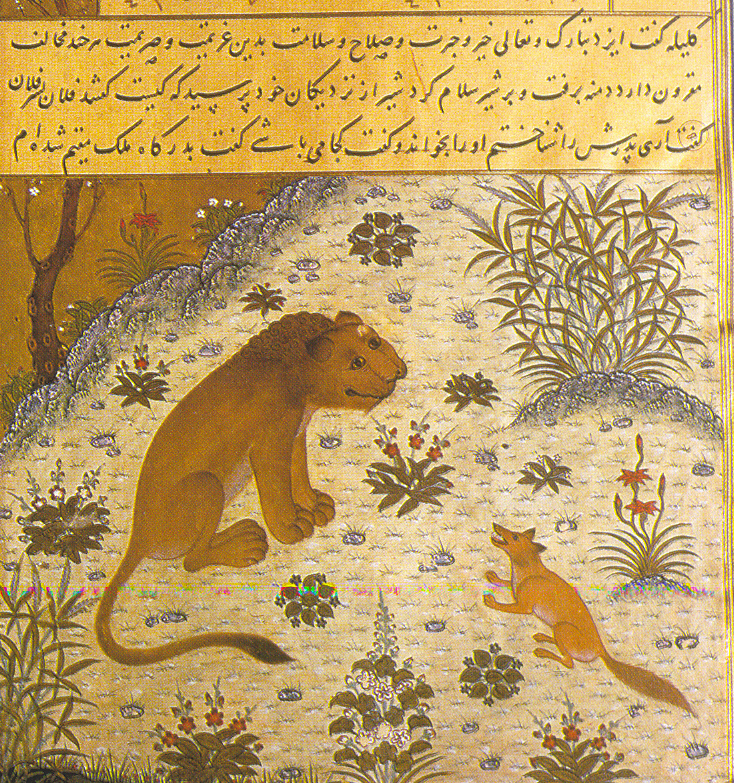|
Cypress Of Kashmar
The Cypress of Kashmar was a cypress tree regarded as sacred to followers of Zoroastrianism. According to the Iranian epic ''Shahnameh'', the tree had grown from a branch Zoroaster had carried away from Paradise and which he planted in honor of King Vishtaspa's conversion to Zoroastrianism in Kashmarbalkh. The spreading branches of the tree are used as an allusion to the spread of Zoroaster's creed. On 10 December 861 AD, Abbasid Caliph al-Mutawakkil ordered the tree be felled and transported to his capital in Samarra where its wood would be used as beams for his new palace. The villagers who lived near the tree pleaded with the caliph and offered money for its protection, to no avail. But one day before the cypress trees arrived, the caliph was killed by his own slaves. The palace and its spiral minaret still stand today. See also * Adur Burzen-Mihr * Zoroastrian Sarv * Torshiz * List of individual trees The following is a list of notable trees. Trees listed here are reg ... [...More Info...] [...Related Items...] OR: [Wikipedia] [Google] [Baidu] |
Kashmar
Kashmar () ( fa, کاشمر, also Romanized as ''Kāshmar''; formerly ''Keshmar'', '' Torshīz'' or ''Soltanabad'') is a city and the capital of Kashmar County, in Razavi Khorasan Province, Iran. Kashmar is located near the river Shesh Taraz in the western part of the province, and south of the province's capital Mashhad, in Iran, from east to Bardaskan, west to Torbat-e Heydarieh, north to Nishapur, south to Gonabad. Until two centuries ago, this city was named Torshiz (). At the 2006 census, its population was 81,527, in 21,947 families. Historical legends Kashmar is a city with ancient history and many legendary stories Among the historical legends are about the Cypress of Kashmar. Cypress of Kashmar The Cypress of Kashmar is a mythical cypress tree of legendary beauty and gargantuan dimensions. It is said to have sprung from a branch brought by Zoroaster from Paradise and to have stood in today's Kashmar in northeastern Iran and to have been planted by Zoroaster ... [...More Info...] [...Related Items...] OR: [Wikipedia] [Google] [Baidu] |
List Of Individual Trees
The following is a list of notable trees. Trees listed here are regarded as important or specific by their historical, national, locational, natural or mythological context. The list includes actual trees located throughout the world, as well as trees from myths. Real forests and individual trees Africa Living Historical Asia Living Historical Europe Living Historical Petrified North America Living Historical Petrified Other *Anthem Christmas tree, the tallest Christmas tree in the United States, erected annually at the Outlets at Anthem outside Phoenix, Arizona. * Boston Christmas Tree. Since 1971, given to Boston by the people of Nova Scotia in thanks for their assistance during the 1917 Halifax Explosion. Located in the Boston Common. * Capitol Christmas Tree, the tree erected annually on the West Front Lawn of the United States Capitol, in Washington, D.C. * Chicago Christmas Tree, the annual tree located in Millennium Park in the city of ... [...More Info...] [...Related Items...] OR: [Wikipedia] [Google] [Baidu] |
Mythological Archetypes
Myth is a folklore genre consisting of narratives that play a fundamental role in a society, such as foundational tales or origin myths. Since "myth" is widely used to imply that a story is not objectively true, the identification of a narrative as a myth can be highly controversial. Many adherents of religions view their own religions' stories as truth and so object to their characterization as myth, the way they see the stories of other religions. As such, some scholars label all religious narratives "myths" for practical reasons, such as to avoid depreciating any one tradition because cultures interpret each other differently relative to one another. Other scholars avoid using the term "myth" altogether and instead use different terms like "sacred history", "holy story", or simply "history" to avoid placing pejorative overtones on any sacred narrative. Myths are often endorsed by secular and religious authorities and are closely linked to religion or spirituality. Many soc ... [...More Info...] [...Related Items...] OR: [Wikipedia] [Google] [Baidu] |
Abbasid Caliphate
The Abbasid Caliphate ( or ; ar, الْخِلَافَةُ الْعَبَّاسِيَّة, ') was the third caliphate to succeed the Islamic prophet Muhammad. It was founded by a dynasty descended from Muhammad's uncle, Abbas ibn Abdul-Muttalib (566–653 CE), from whom the dynasty takes its name. They ruled as caliphs for most of the caliphate from their capital in Baghdad in modern-day Iraq, after having overthrown the Umayyad Caliphate in the Abbasid Revolution of 750 CE (132 AH). The Abbasid Caliphate first centered its government in Kufa, modern-day Iraq, but in 762 the caliph Al-Mansur founded the city of Baghdad, near the ancient Babylonian capital city of Babylon. Baghdad became the center of science, culture and invention in what became known as the Golden Age of Islam. This, in addition to housing several key academic institutions, including the House of Wisdom, as well as a multiethnic and multi-religious environment, garnered it a worldwide reputa ... [...More Info...] [...Related Items...] OR: [Wikipedia] [Google] [Baidu] |
Mythology
Myth is a folklore genre consisting of Narrative, narratives that play a fundamental role in a society, such as foundational tales or Origin myth, origin myths. Since "myth" is widely used to imply that a story is not Objectivity (philosophy), objectively true, the identification of a narrative as a myth can be highly controversial. Many adherents of religions view their own religions' stories as truth and so object to their characterization as myth, the way they see the stories of other religions. As such, some scholars label all religious narratives "myths" for practical reasons, such as to avoid depreciating any one tradition because cultures interpret each other differently relative to one another. Other scholars avoid using the term "myth" altogether and instead use different terms like "sacred history", "holy story", or simply "history" to avoid placing pejorative overtones on any sacred narrative. Myths are often endorsed by secular and religious authorities and are close ... [...More Info...] [...Related Items...] OR: [Wikipedia] [Google] [Baidu] |
Kashmar County
Kashmar County ( fa, شهرستان کاشمر, ''Ŝahrestāne Kāŝmar'') is located in Razavi Khorasan province, Iran. The capital of the county is Kashmar Kashmar () ( fa, کاشمر, also Romanized as ''Kāshmar''; formerly ''Keshmar'', '' Torshīz'' or ''Soltanabad'') is a city and the capital of Kashmar County, in Razavi Khorasan Province, Iran. Kashmar is located near the river Shesh Tara .... At the 2006 census, the county's population (including those portions of the county later split off to form Kuhsorkh County) was 146,536, in 39,554 households. Retrieved 27 October 2022 At the 2016 census, the county's population was 168,664, in 52,778 households. Administrative divisions References Counties of Razavi Khorasan Province {{RazaviKhorasan-geo-stub ... [...More Info...] [...Related Items...] OR: [Wikipedia] [Google] [Baidu] |
Trees In Mythology
Trees are significant in many of the world's mythologies, and have been given deep and sacred meanings throughout the ages. Human beings, observing the growth and death of trees, and the annual death and revival of their foliage, have often seen them as powerful symbols of growth, death and rebirth. Evergreen trees, which largely stay green throughout these cycles, are sometimes considered symbols of the eternal, immortality or fertility. The image of the Tree of life or world tree occurs in many mythologies. Examples include the banyan and the sacred fig ('' Ficus religiosa'') in Hinduism, Buddhism and Jainism, the tree of the knowledge of good and evil of Judaism and Christianity. In folk religion and folklore, trees are often said to be the homes of tree spirits. Germanic mythology as well as Celtic polytheism both appear to have involved cultic practice in sacred groves, especially grove of oak. The term '' druid'' itself possibly derives from the Celtic word for o ... [...More Info...] [...Related Items...] OR: [Wikipedia] [Google] [Baidu] |
Individual Conifers
An individual is that which exists as a distinct entity. Individuality (or self-hood) is the state or quality of being an individual; particularly (in the case of humans) of being a person unique from other people and possessing one's own needs or goals, rights and responsibilities. The concept of an individual features in diverse fields, including biology, law, and philosophy. Etymology From the 15th century and earlier (and also today within the fields of statistics and metaphysics) ''individual'' meant " indivisible", typically describing any numerically singular thing, but sometimes meaning "a person". From the 17th century on, ''individual'' has indicated separateness, as in individualism. Law Although individuality and individualism are commonly considered to mature with age/time and experience/wealth, a sane adult human being is usually considered by the state as an "individual person" in law, even if the person denies individual culpability ("I followed instr ... [...More Info...] [...Related Items...] OR: [Wikipedia] [Google] [Baidu] |
Trees In Religion
Trees are significant in many of the world's mythologies, and have been given deep and sacred meanings throughout the ages. Human beings, observing the growth and death of trees, and the annual death and revival of their foliage, have often seen them as powerful symbols of growth, death and rebirth. Evergreen trees, which largely stay green throughout these cycles, are sometimes considered symbols of the eternal, immortality or fertility. The image of the Tree of life or world tree occurs in many mythologies. Examples include the banyan and the sacred fig (''Ficus religiosa'') in Hinduism, Buddhism and Jainism, the tree of the knowledge of good and evil of Judaism and Christianity. In folk religion and folklore, trees are often said to be the homes of tree spirits. Germanic mythology as well as Celtic polytheism both appear to have involved cultic practice in sacred groves, especially grove of oak. The term ''druid'' itself possibly derives from the Celtic word for oak. The Egyp ... [...More Info...] [...Related Items...] OR: [Wikipedia] [Google] [Baidu] |
Persian Mythology
Persian mythology or Iranian mythology ( Persian:اساطیرشناسی ایرانی) is the body of the myths originally told by ancient Persians and other Iranian peoples, and a genre of Ancient Persian folklore. These stories concern the origin and nature of the world, the lives and activities of deities, heroes, and mythological creatures, and the origins and significance of the ancient Persians' own cult and ritual practices. Modern scholars study the myths to shed light on the religious and political institutions of not only modern-day Iran but the Greater Iran, which includes regions of West Asia, Central Asia, South Asia and Transcaucasia where Iranian culture has had significant influence. Historically, these were regions long ruled by dynasties of various Iranian empires, that incorporated considerable aspects of Persian culture through extensive contact with them, or where sufficient Iranian peoples settled to still maintain communities who patronize their respective ... [...More Info...] [...Related Items...] OR: [Wikipedia] [Google] [Baidu] |
Persian Literature
Persian literature ( fa, ادبیات فارسی, Adabiyâte fârsi, ) comprises oral compositions and written texts in the Persian language and is one of the world's oldest literatures. It spans over two-and-a-half millennia. Its sources have been within Greater Iran including present-day Iran, Iraq, Afghanistan, the Caucasus, and Turkey, regions of Central Asia (such as Tajikistan) and South Asia where the Persian language has historically been either the native or official language. For example, Rumi, one of the best-loved Persian poets, born in Balkh (in modern-day Afghanistan) or Wakhsh (in modern-day Tajikistan), wrote in Persian and lived in Konya (in modern-day Turkey), at that time the capital of the Seljuks in Anatolia. The Ghaznavids conquered large territories in Central and South Asia and adopted Persian as their court language. There is thus Persian literature from Iran, Mesopotamia, Azerbaijan, the wider Caucasus, Turkey, Pakistan, Bangladesh, India, Tajik ... [...More Info...] [...Related Items...] OR: [Wikipedia] [Google] [Baidu] |
860s Individual Tree Deaths
86 may refer to: * 86 (number), a natural number * 86 (term), a slang term for getting rid of something Dates * 86 BC, a year of the pre-Julian Roman calendar * AD 86, a common year of the Julian calendar * 1986, a common year of the Gregorian calendar * 2086, a common year of the Gregorian calendar Art and entertainment * ''86'' (novel series), a Japanese light novel series and anime series * "86", a song by Green Day from ''Insomniac'' * Agent 86 or Maxwell Smart, a character on ''Get Smart'' * ''Eighty-Sixed'', a 2017 web series created by Cazzie David and Elisa Kalani * ''Eighty-Sixed'', a 1989 novel by David B. Feinberg * ''86'd'', a 2009 novel by Dan Fante * "86" (Dawn Richard song) Transportation * Toyota 86, sports car * List of highways numbered 86 * 86 (MBTA bus) * 86 (New Jersey bus) 86 may refer to: * 86 (number), a natural number * 86 (term), a slang term for getting rid of something Dates * 86 BC, a year of the pre-Julian Roman calendar * AD 86, a common ... [...More Info...] [...Related Items...] OR: [Wikipedia] [Google] [Baidu] |

.jpg)

.jpg)
_Geraint.jpg)




